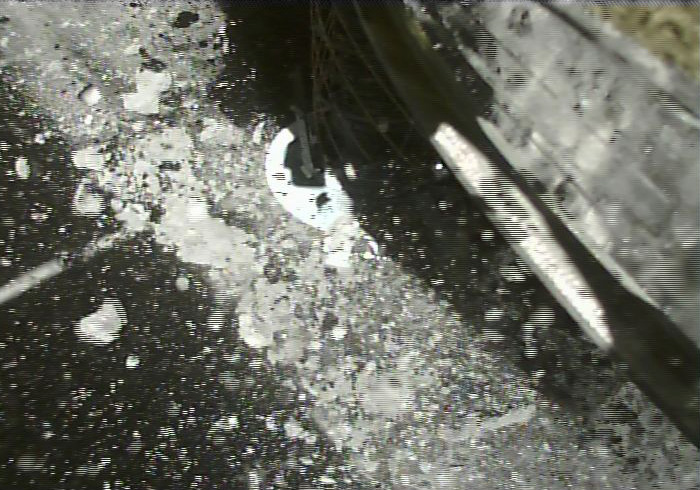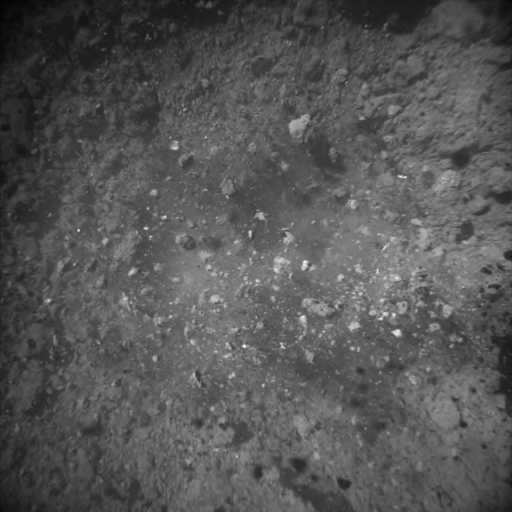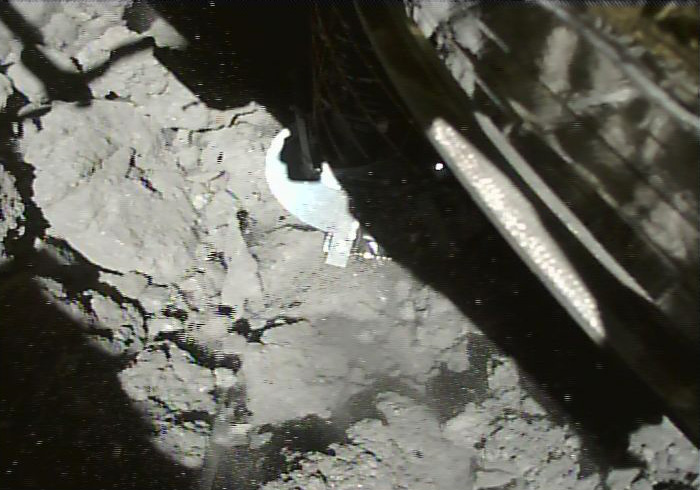Touchdown! Incredible Photos Show 2nd Asteroid Landing by Japan's Hayabusa2

The Japanese spacecraft Hayabusa2 made a carefully choreographed second touchdown on an asteroid called Ryugu last night (July 10) — and the photos are incredible.
The images beamed back to Earth show the perspective of two different cameras on board the spacecraft: the main navigation camera and a publicly funded camera pointed past the sampling mechanism.
Photos from the first camera show views of Ryugu's surface at touchdown; the second shows the nearby rock before and after the sampling itself.
Related: Pow! Japan's Hayabusa2 Bombs Asteroid Ryugu, Makes Crater (Photo)
Mission staff spent hours carefully lowering the Hayabusa2 spacecraft before it spotted the bright, white target marker it had dropped in preparation for the maneuver. Then, the scientists held their breath and waited as the touchdown itself played out.
That process is dramatic: the spacecraft alights on Ryugu's surface, then fires a bullet made of tantalum (so scientists analyzing the sample can ignore the metal, which isn't found on the asteroid) into the rocky surface. Some of the debris blasted off from the surface by the bullet ends up in the sampling horn built into Hayabusa2, then the spacecraft lifts itself off the surface.

JAXA confirmed that touchdown went smoothly and the bullet fired, suggesting it successfully snagged a sample of material that was buried below Ryugu's surface until April, when the spacecraft deployed a copper bomb to create an artificial crater.
Get the Space.com Newsletter
Breaking space news, the latest updates on rocket launches, skywatching events and more!

Subsurface material is particularly intriguing for scientists looking to get their hands on asteroid samples because it has been protected from the harsh effects of cosmic rays and charged particles of solar wind blasting through space.
Hayabusa2 will leave Ryugu at the end of this year and spend about a year making the journey back to Earth with its cargo.
- Watch Japan's Hayabusa2 Grab a Piece of an Asteroid in This Incredible Video!
- Shadow Selfie! Japanese Asteroid Probe Snaps Amazing Post-Landing Pic
- Japan's Hopping Rovers Capture Amazing Views of Asteroid Ryugu (Video)
Email Meghan Bartels at mbartels@space.com or follow her @meghanbartels. Follow us on Twitter @Spacedotcom and on Facebook.
Join our Space Forums to keep talking space on the latest missions, night sky and more! And if you have a news tip, correction or comment, let us know at: community@space.com.

Meghan is a senior writer at Space.com and has more than five years' experience as a science journalist based in New York City. She joined Space.com in July 2018, with previous writing published in outlets including Newsweek and Audubon. Meghan earned an MA in science journalism from New York University and a BA in classics from Georgetown University, and in her free time she enjoys reading and visiting museums. Follow her on Twitter at @meghanbartels.









